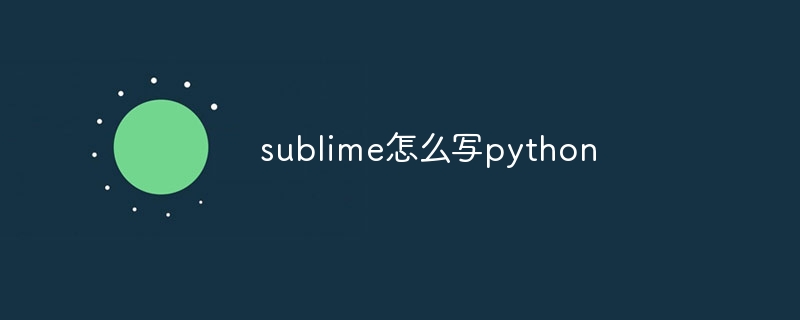
Writing Python code in Sublime Text requires: 1. Install the SublimeREPL plug-in; 2. Configure the Python interpreter path; 3. Create a new file with the extension ".py"; 4. Use the function of SublimeREPL to write Python code; 5. Run the code through the menu or command line; 6. Use SublimeREPL's debugging capabilities to find and fix errors.

How to write Python in Sublime Text
Sublime Text is a popular text editor known for its Known for its powerful features and customizability. It is also ideal for writing Python code.
Settings
Before writing Python code in Sublime Text, you need to perform the following settings:
{ "python_interpreter": "/usr/bin/python3" }Replace it with the Python interpreter's path.
Create a new file
To create a new Python file:
Writing Python Code
Now you can start writing Python code. The SublimeREPL plug-in will provide syntax highlighting, auto-completion and error prompts.
Running Python Code
To run Python code, use one of the following methods:
Ctrl B(Windows) orCmd B(macOS).Debugging Python Code
SublimeREPL provides debugging capabilities to help you find errors and fix problems. To debug your code:
The above is the detailed content of How to write python in sublime. For more information, please follow other related articles on the PHP Chinese website!




